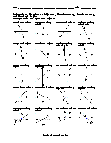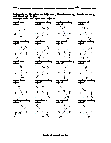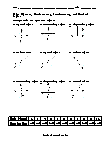Adjacent, Supplementary, Complementary and Vertical Angles Worksheets
What Are Adjacent, Supplementary, Complementary and Vertical Angles? Science is a broad term that entails in it, others different branches such as statistics and mathematics. Mathematics is further divided into algebra and geometry. While many students find geometry easy and fun, some find it really confusing and difficult. And that is because they lack the basic definitions of the angles used in geometry. Let’s form the basics to get our grasp over geometry. Adjacent Angles: When two angles share a common vertex or side, they are said to be adjacent angles. The vertex is the point where the ray of the angles or meets or where the ray is ended. It is also important to note that adjacent angles can be ‘adjacent supplementary angles’ and ‘adjacent complementary angles.’ An example of adjacent angles is the hands of a clock. Supplementary Angles: When two or more pairs of angles add up to the sum of 180 degrees, the angles are called supplementary angles. A 180-degree angle is a straight line with angles marked on it. Complementary Angles: Much like supplementary angles, complementary angles add up to 90 degrees. They form a right-angle triangle and making an L shape. Vertical Angles: When two lines crosses or intersects each other, the angles are said to be vertical angles. These angles are opposite to each other and always equal. They are also known as vertically opposite angles.
-
Basic Lesson
Guides students through the classification of Adjacent and Vertical angles. Adjacent angles are angles that have a common ray coming out of the vertex going between two other rays.
View worksheet -
Intermediate Lesson
Guides students through the classification of Supplementary and Complementary angles. Supplementary Angles A pair of angles is supplementary if their measurements add up to 180 degrees. If the two supplementary angles are adjacent (i.e. have a common vertex and share a side, but do not have any interior points in common) their non-shared sides form a straight line.
View worksheet -
Independent Practice 1
A really great activity for allowing students to understand the concepts of angle classification. Name pairs of the specified angles.
View worksheet -
Independent Practice 2
Students name 20 classified angles. The answers can be found below.
View worksheet -
Homework Worksheet
Students are provided with 12 problems to achieve the concepts of Adjacent, Supplementary, Complementary and Vertical Angles.
View worksheet -
Skill Quiz
This tests the students ability to understand Adjacent, Supplementary, Complementary and Vertical Angles.
View worksheet
Naming Angles
One way to remember supplementary angles versus complimentary angles is to remember that 90° angles are right angles, compliments are the right thing to say, right angles equal 90° , so complimentary angles are 2 angles that equal 90°







